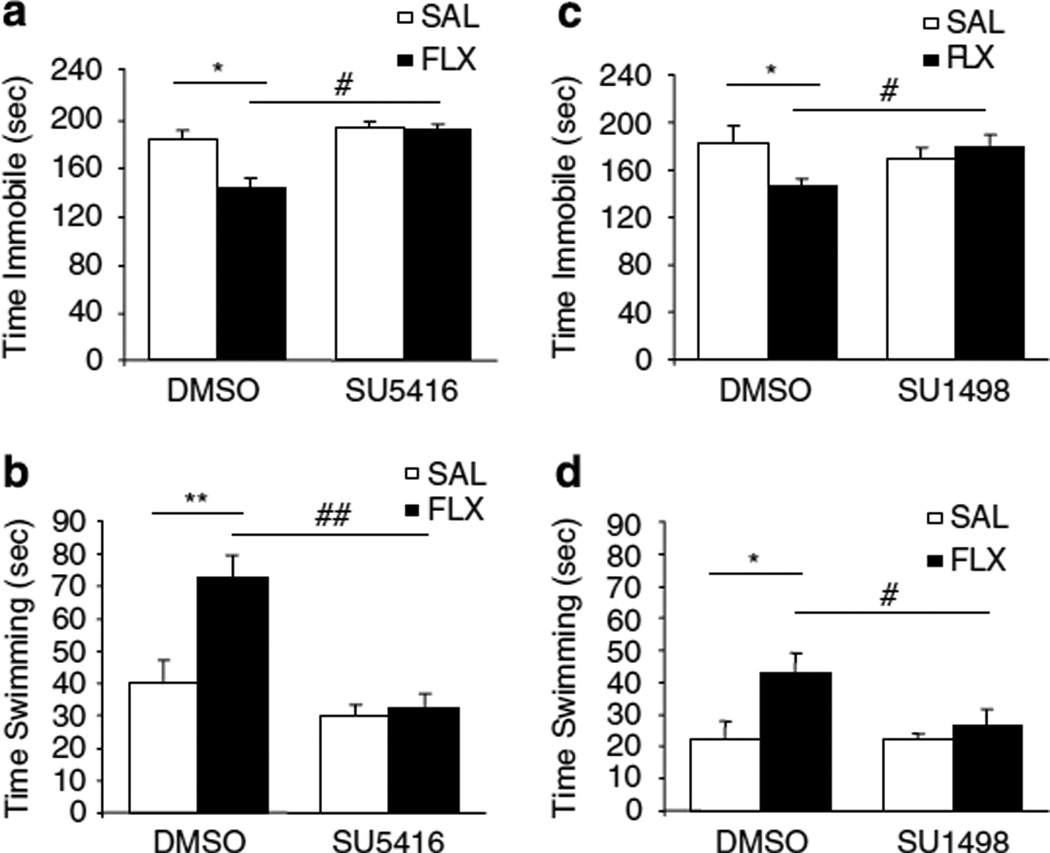Figure 4.
VEGF–Flk-1 signaling is required for the effect of fluoxetine (FLX) in the forced swim test. The 2×2 ANOVA showed an interaction between the treatment × infusion for both scored behaviors (F(2, 63) = 4.41, P = 0.016). (a) CUS + FLX + DMSO rats were significantly less immobile than CUS + SAL + DMSO and CUS + FLX +SU5416 rats (F(3, 21) = 4.33, P<005) (n = 4–9 per group). Although CUS + FLX + SU5416 and CUS +SAL +SU5416 rats did not spend significantly different times immobile. (b) CUS + FLX + DMSO swam significantly more than CUS + SAL+DMSO (F(3, 21) = 11.51, P<0.01), whereas there was no significant difference between CUS + FLX +SU5416 and CUS +SAL+SU5416. (c) CUS + FLX + DMSO rats were significantly less immobile than CUS + SAL+DMSO and CUS + FLX + SU1498 rats (F(3, 26) = 4.13, P<0.05) (n = 7–8 per group), whereas CUS + FLX + SU 1498 and CUS + SAL + SU1498 rats did not spend significantly different times immobile. (d) CUS + FLX + DMSO swam significantly more than CUS + SAL+DMSO (F(3, 26) = 3.58, P<0.05), whereas there was no significant difference between CUS + FLX + SU 1498 and CUS + SAL+SU1498. The 2×2 ANOVA statistical analysis found an interaction between treatment x infusion for both behavioral parameters (F(2, 78) = 3.71, P= 0.029). Results are expressed as mean ± SEM of the seconds swimming (a, b) or immobile (c, d). FLX, fluoxetine; SAL, saline control. *P<0.05,**P<0.01 compared with CUS + SAL+DMSO;#P<0.05, ##P<0.01 compared with CUS + FLX + DMSO.

